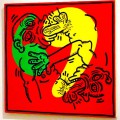- American Beauty
- An Afternoon with Keith, 2005
- Bathed in Heraclitan Fire
- Between Politics and Mythology, 2005
- Body Language: Keith Haring an…
- Conversation with Keith Haring, 2005
- Conversations
- Disegno e Colore: The Reconcil…
- Drawing the Line: The Graphic …, 2005
- Funny How Things Turn Out
- Haring – Art in Transit
- Haring All-Over, 1999
- Heaven and Hell
- His Art Is His Life, 2005
- Introduction To Art In Transit
- Keith Haring, 2005
- Keith Haring and Czech Art
- Keith Haring, An Intimate Conv…, 1989
- Keith Haring: Art and Commerce
- Keith Haring: In The Moment
- Keith Haring: The Diamond, the…, 2005
- Keith Haring. A Great Artist, …, 2005
- Keith’s Kids, 1997
- Kid Haring, 1997
- Memories, 2005
- Milan, 1984, 2005
- No Boundaries, 2007
- O Livro da Vida, 2010
- On the Shoulders of Giants. Ke…, 2005
- Paradise Garage, 2001
- Radiant Eros: Keith Haring and…
- Requiem for the Degas of the B…, 1990
- Sex is Life is Sex
- The Marriage of Heaven and Hel…
- The Radiant (Christ) Child, 2007
- The Ten Commandments, An Inter…, 1985
- Thou Shalt Be a Bit Rude, 2001
- Untitled, 2005
Keith’s Kids
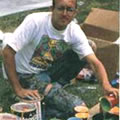
“Haring was tireless in his work with children of all ages and backgrounds.”
Continue Reading
Memories
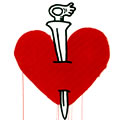
William Burroughs, Leo Castelli, Henry Geldzahler, Timothy Leary, Roy Lichtenstein, Madonna, Yoko Ono, and Brooke Shields remember Haring.
Continue Reading
Milan, 1984
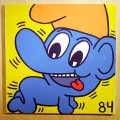
Elio Fiorucci writes, “In 1984, we stripped bare our store, measuring 1,500 square meters, and asked Keith Haring to treat it as a space of his own, in which he would be able to create a great work of art.”.
Continue Reading
No Boundaries
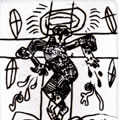
“…both Schiele and Haring were precocious, incredibly prolific, obsessive workers – producers of voluminous quantities of images, with both artists’ oeuvres consisting primarily of drawings. They each found their signature style at in their early 20s.”
Continue Reading
On the Shoulders of Giants. Keith Haring
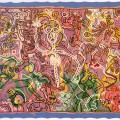
“Haring did not hesitate to redo other people’s pictures, repainting, formally and explicitly, works by Picasso, Legér, or Matisse, in demonstration of the fact that tradition is a life blood for artists of every age.”
Continue Reading
Paradise Garage
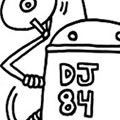
“Haring’s work embodies the sounds of the New York streets and of streetwise clubs like Paradise Garage”
Continue Reading
Radiant Eros: Keith Haring and Sexuality
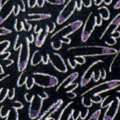
“Haring’s innovative, and also politically progressive, strength will only be obvious to his age if the role which sexuality played in his work and in his imagination is taken into consideration…”
Continue Reading
Sex is Life is Sex
The Marriage of Heaven and Hell
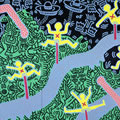
“…Keith Haring, too, had explored a darker side of experience long before the dread diagnosis. The earliest works produced in his characteristic graphic style include serpents and monsters, nuclear radiation and falling angels, cannibals, omnivorous worms, bloody daggers and skeletons…”
Continue Reading
The Radiant (Christ) Child

Keith Haring and the Jesus Movement While Keith Haring’s art is not often associated with traditional religious imagery, much of his pictorial vocabulary was in fact influenced by the Jesus Movement of the 1970s. Haring retooled the Jesus Movement’s redemptive imagery into more pessimistic and ambiguous statements, creating an expression of apocalyptic belief suited to his time.
Continue Reading
